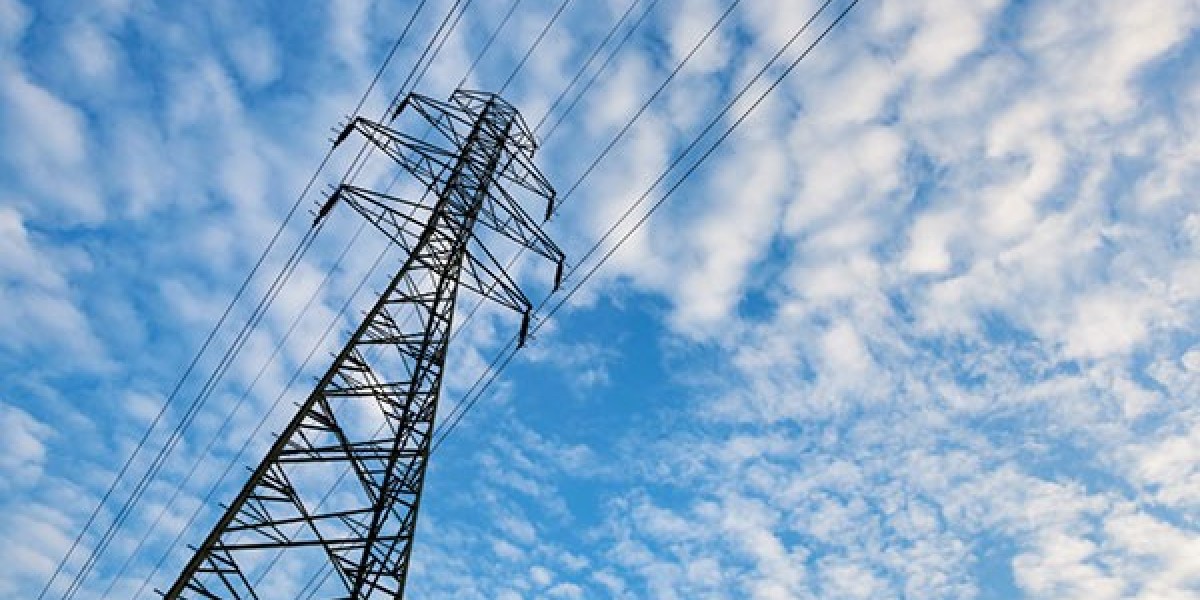Outdoor Electrical Cabinets are specialized enclosures designed to protect electrical equipment from environmental factors while providing a safe and efficient space for power distribution and control systems. These cabinets house and protect essential electrical components such as circuit breakers, transformers, switches, and control panels, ensuring that electrical systems function reliably, even in harsh outdoor environments.
These cabinets are commonly used in industries like telecommunications, utilities, construction, and renewable energy installations, providing an essential solution for keeping electrical components safe from the elements while allowing easy access for maintenance and repairs.
What Are Outdoor Electrical Cabinets?
Outdoor electrical cabinets are weather-resistant enclosures designed to protect electrical equipment in external environments. These cabinets prevent dust, moisture, heat, and other external factors from damaging sensitive electrical components, ensuring that the system operates effectively and efficiently. They are constructed with robust materials that provide protection from environmental elements, such as rain, snow, dust, and extreme temperatures.
Key Features of Outdoor Electrical Cabinets
Weatherproof Construction
- Outdoor electrical cabinets are built with weather-resistant materials such as stainless steel, aluminum, or fiberglass to protect internal components from harsh conditions. The cabinet’s external structure is often sealed to prevent water ingress, and it is designed to withstand corrosion and rust, ensuring long-term durability.
Ingress Protection (IP) Rating
- The Ingress Protection (IP) rating indicates the cabinet’s ability to protect against dust and water ingress. For outdoor use, an IP rating of IP55 or higher is generally recommended, ensuring that the cabinet is dust-tight and can withstand water jets or submersion to some extent.
Thermal Management
- Outdoor cabinets often include cooling and ventilation features to regulate the internal temperature. Without proper ventilation, electrical components can overheat and fail. Some cabinets have built-in fans, air conditioning units, or ventilation openings to ensure proper airflow and prevent heat buildup.
Security and Safety
- Many outdoor electrical cabinets are equipped with lockable doors to prevent unauthorized access. They may also feature grounding and surge protection mechanisms to safeguard the electrical components from power surges or lightning strikes, which are particularly important for outdoor installations.
Customization Options
- Outdoor electrical cabinets can be customized to meet specific installation needs. They can be designed with a variety of sizes, internal configurations, and specialized features such as cable management, shelves, or specific mounting solutions to suit particular types of equipment.
Easy Access for Maintenance
- These cabinets are designed with functionality in mind, allowing easy access to internal components for routine maintenance or repairs. Hinged or removable doors and secure locking mechanisms make accessing the electrical systems simple and efficient.
Durability and Longevity
- Outdoor electrical cabinets are engineered to withstand physical stress, such as impact from harsh weather conditions (e.g., hail, high winds). The materials used are designed for long-lasting durability, reducing the need for frequent replacements or repairs.
Types of Outdoor Electrical Cabinets
Distribution Cabinets
- These cabinets house electrical panels that distribute electricity to various circuits or systems. They are typically used in power distribution systems to ensure safe and efficient power delivery from a central source to multiple endpoints.
Control Cabinets
- Control cabinets are used to house control equipment such as switches, circuit breakers, and programmable logic controllers (PLCs). These cabinets provide a central location for operators to monitor and control various electrical systems, such as motor control or automated processes.
Metering Cabinets
- Metering cabinets are designed to house electric meters for monitoring and measuring energy consumption. They are commonly used in utility networks to provide access to metering equipment for monitoring energy usage and ensuring accurate billing.
Switchgear Cabinets
- Switchgear cabinets contain electrical switches and protective devices to control the flow of electricity, ensuring safe operation of electrical systems. These cabinets are typically used in high-voltage and low-voltage networks to protect against overloads, short circuits, and electrical faults.
Transformer Cabinets
- Transformer cabinets are used to house transformers that step up or step down electrical voltage. These cabinets protect transformers and other related equipment from environmental elements and provide easy access for maintenance and repairs.
Battery Cabinets
- These cabinets house batteries used for backup power systems in outdoor applications. Battery cabinets ensure that batteries are stored safely, protecting them from extreme temperatures and ensuring their longevity and performance.
Benefits of Outdoor Electrical Cabinets
Protection from Harsh Weather Conditions
- The primary benefit of outdoor electrical cabinets is their ability to protect electrical components from environmental factors such as rain, snow, dust, humidity, and extreme temperatures. This protection ensures that electrical systems continue to function efficiently and reliably, even in harsh outdoor environments.
Increased Safety
- Outdoor electrical cabinets reduce the risk of electrical accidents by providing a secure, weather-resistant enclosure for electrical equipment. The lockable features of the cabinets help prevent unauthorized access to live electrical systems, minimizing the risk of electrical shock or fire hazards.
Extended Equipment Life
- By safeguarding electrical components from environmental damage and wear, outdoor electrical cabinets help extend the lifespan of the equipment inside. This reduces maintenance costs and helps prevent the need for frequent replacements.
Easy Maintenance and Accessibility
- Outdoor electrical cabinets are designed for ease of access, allowing for quick inspection and maintenance. Hinged doors, removable panels, and internal cable management make it simple for technicians to work on the equipment inside.
Energy Efficiency
- Properly designed outdoor electrical cabinets often include cooling or ventilation mechanisms to ensure that electrical components operate within optimal temperature ranges. This helps prevent overheating, improving system efficiency and reducing energy waste.
Cost-Effectiveness
- Outdoor electrical cabinets can reduce the cost of repairs and replacements by providing robust protection for valuable electrical equipment. Additionally, their durability and low maintenance requirements result in long-term cost savings.
Applications of Outdoor Electrical Cabinets
Telecommunications
- Outdoor electrical cabinets are commonly used in telecom installations, such as base stations, cell towers, and data centers, to house equipment like routers, power supplies, and backup batteries. These cabinets ensure that telecom equipment remains safe and operational in all weather conditions.
Renewable Energy Systems
- In solar power and wind energy installations, outdoor electrical cabinets house the inverters, batteries, and controllers that are essential for converting and storing energy. These cabinets provide safe and weatherproof protection for critical components in renewable energy systems.
Utilities and Power Distribution
- Outdoor electrical cabinets are widely used in power distribution networks to house circuit breakers, switches, and metering equipment. They ensure that power distribution systems operate safely and efficiently, even in remote or outdoor locations.
Construction and Industrial Sites
- In construction sites, manufacturing plants, and other industrial environments, outdoor electrical cabinets provide protection for temporary or permanent electrical systems. These cabinets house equipment such as generators, transformers, and control panels, keeping them secure from environmental damage.
Public Infrastructure
- Outdoor electrical cabinets are used in public infrastructure applications such as street lighting, traffic control systems, and smart city technology. They house equipment necessary for the operation of critical public services.
How to Choose the Right Outdoor Electrical Cabinet
Environmental Conditions
- Consider the climate and weather conditions where the cabinet will be installed. Ensure that the cabinet has the necessary IP rating to withstand exposure to rain, dust, humidity, and extreme temperatures.
Size and Capacity
- Choose a cabinet that can accommodate the electrical equipment that will be housed inside, allowing for easy installation and future expansions if needed. The cabinet should provide adequate space for proper ventilation and cable management.
Material Selection
- Select materials such as stainless steel, aluminum, or fiberglass based on the environmental conditions and level of protection required. Stainless steel offers excellent durability in corrosive environments, while fiberglass is lightweight and resistant to rust.
Security Features
- Ensure that the cabinet has proper locking mechanisms to prevent unauthorized access, especially for high-voltage or critical equipment. Look for cabinets with secure hinges, tamper-proof locks, and anti-theft designs.
Thermal Management
- If the electrical equipment generates significant heat, choose a cabinet with built-in cooling or ventilation systems to maintain optimal operating conditions and prevent overheating.
Conclusion
Outdoor electrical cabinets are essential for ensuring the safety, efficiency, and longevity of electrical systems in external environments. They protect critical equipment from weather, environmental factors, and physical damage, allowing electrical systems to operate reliably in harsh conditions. Whether for telecom, utility, renewable energy, or industrial applications, these cabinets provide a cost-effective, secure, and durable solution for managing outdoor electrical infrastructure. Proper selection and installation of outdoor electrical cabinets are crucial for maintaining system performance, reducing downtime, and ensuring long-term reliability.









